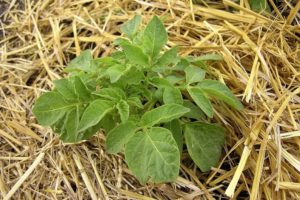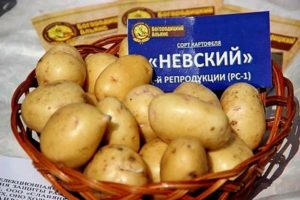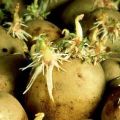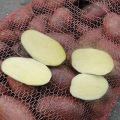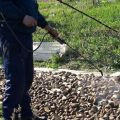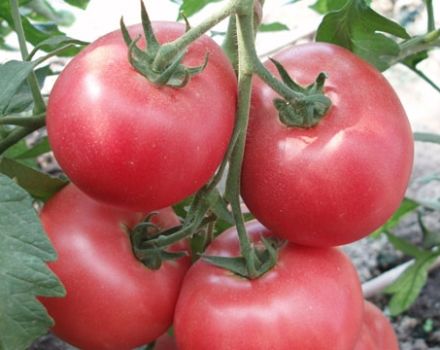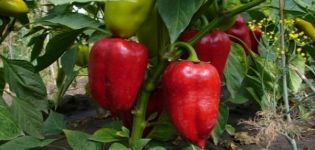Description of sweet potato Batat, its benefits and harms, cultivation and care
Sweet potato is the second common name for Batata. An annual climbing plant from South America, popular in Indonesia, it is grown in India, and in China it is considered the fruit of longevity.
Description
Stem up to 17 cm high covered with heart-shaped leaves. The plant is perennial at home, we grow it as an annual, it blooms with lilac or white flowers. The shape of the flowers is funnel-shaped. The formation of tubers in a plant occurs in the forks of lateral roots.
Sweet potato tubers can reach large sizes, weighing more than 3 kg. The shape of the fruit can be different (round, oblong, ribbed), depending on the variety. The color of the pulp and rind of tubers depends on the varietal and species. There are varieties with tubers of orange, purple, red, yellow and white colors. The sweet taste of the flesh is sweet due to the glucose it contains.
You can buy the variety of Batata on sale:
- stern;
- vegetable;
- dessert.

There is less glucose in fodder varieties, they are used as a substitute for potatoes. Vegetable species are also eaten instead of potatoes, but dessert varieties have a taste closer to carrot, pumpkin, banana and the color of the pulp is bright, orange.
Popular dessert varieties include Batatov varieties:

- Georgia red;
- Beauregard.
How to plant a variety of potatoes:
- Purple;
- Japanese;
- White.
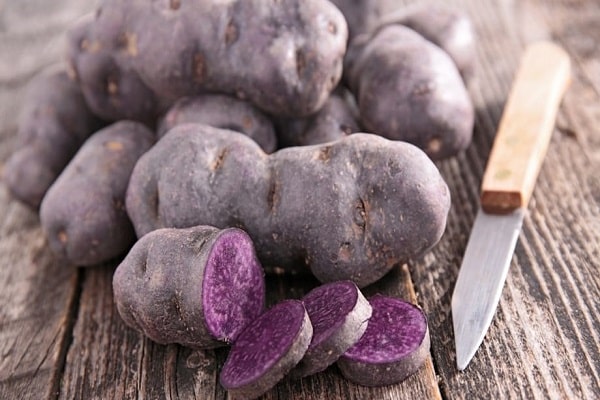
How is Batat useful?
Sweet potatoes Sweet potatoes are not very popular in our country. Such a plant is thermophilic, and our climate cannot be called mild. Interest in tropical culture is growing thanks to the popularization of its new varieties, adapted to the conditions of our summer, and information about the usefulness of its fruits.
The taste of the Batata tuber vaguely resembles the taste of frozen potatoes. This similarity explains the plant's second name. It is the substances contained in the root that explain the benefits and harms of Batata. The composition of the pulp, its benefits largely depends on the variety, as well as on the growing conditions.
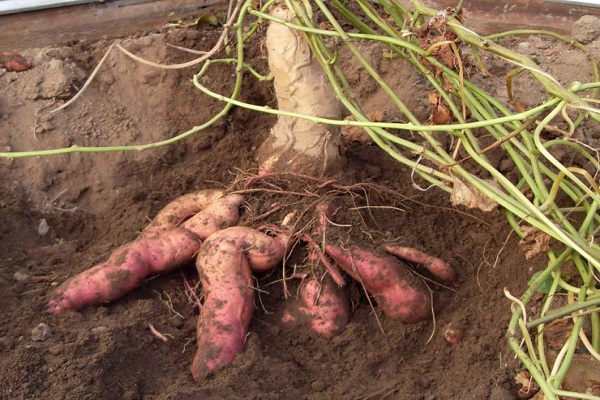
Cores are advised to use varieties in which the flesh of the tubers is purple. They found a high content of anthocyanins, they improve heart function, their use in food reduces the risk of eye and vascular diseases.
Orange Tuber Sweet potato improves vision, keeps eyes youthful thanks to vitamin A, there is more of it in the pulp compared to other vegetables. Orange tuber dishes are especially useful for the elderly and people with weight problems.

For women who have entered the period of menopause (menopause), the fruits of Batata help maintain the level of female hormones in the body. In young women, it increases libido. People who regularly eat tubers are less likely to get cancer and nervous disorders.
There are contraindications next to the beneficial properties of Batata. Not everyone benefits from sweet potatoes. People with various pathologies of the gastrointestinal tract can feel harm to health. It is not recommended to include it in the diet of pregnant and lactating women.
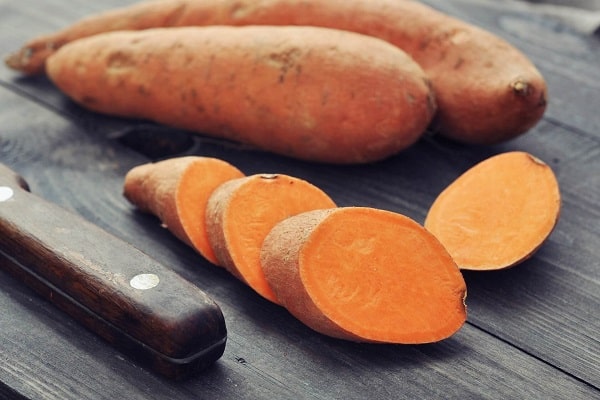
How to plant and propagate?
In order to have time to grow Batat in our climate in the summer, you need to learn how to grow its seedlings. Planting tubers directly into the garden will not bring success. For the formation of full-fledged fruits in the open field, our short summer will not be enough. First you need to study the varieties that are on sale. Choose the variety whose description is more suitable for a specific area.
To obtain seedlings, you need ripe sweet potato tubers. Large tuber specimens can be divided into several pieces with a clean and sharp knife. The resulting parts must be half-immersed in containers with water. Germinate tubers on a sunny windowsill or under a phytolamp. The first sprouts on the tubers will hatch in 2–3 weeks.
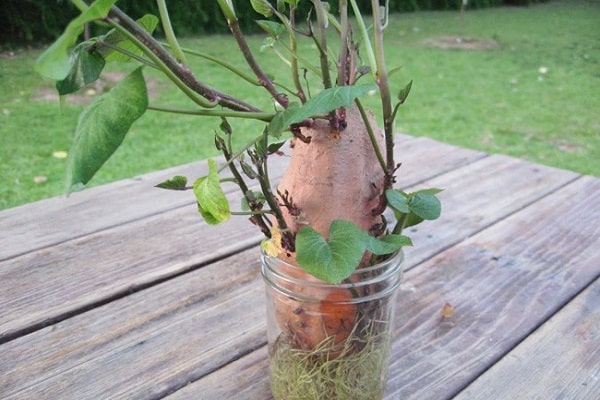
When the Batata tuber is covered with shoots, carefully separate (cut off) them and put them in water until roots appear. A 10-centimeter outgrowth is considered good. Up to 7 lots of sprouts can be obtained from one cut. It takes about 10 days for sprouts to form. The roots appear in three days. When the height of sprouts with roots is about 20 cm, they can be planted in the soil.
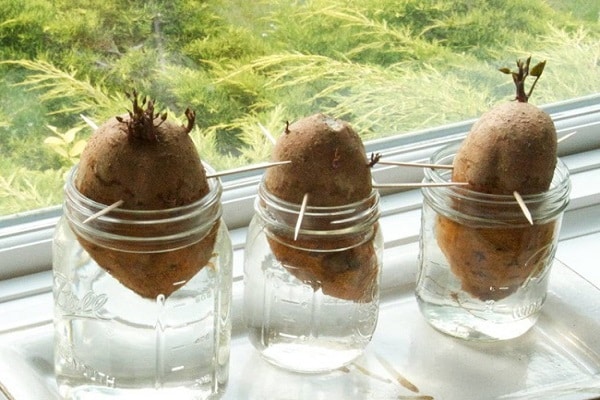
Site selection and soil preparation
When choosing a location, consider the following requirements:
- well lit throughout daylight hours;
- located behind the wind;
- groundwater is no closer than 2 m.
To prepare a bed for Batata in the fall. Determine the acidity of the soil, if acidic, then deacidify with lime. In the fall, apply most of the fertilizer. Spread 3 kg of humus for each square meter of soil, scatter fertilizers: superphosphate (20 g) and potassium sulfate (15 g). In the spring, 5 days before planting seedlings, dig up the soil for the last time, adding 80 g / sq. m. ammonium nitrate.
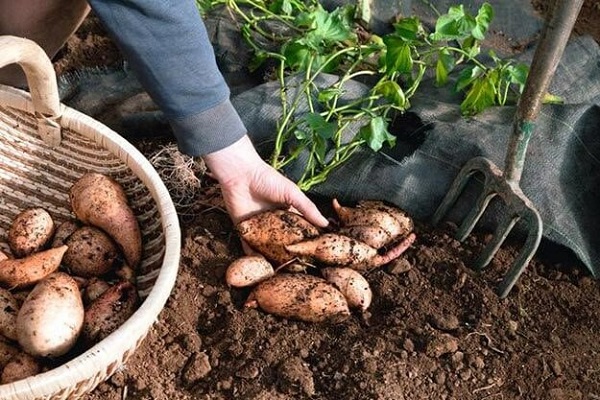
To form holes for seedlings according to the scheme 30 * 50 cm, 15 cm deep. Plant the sweet potato in the heated ground, leave most of the internodes on top. Three Batata planting patterns are common:
- vertical;
- horizontal;
- V-shaped.
Gently crush the soil around the seedlings, water the holes. When the plants are planted, cover them with cover material to protect them from the sun and night cold.
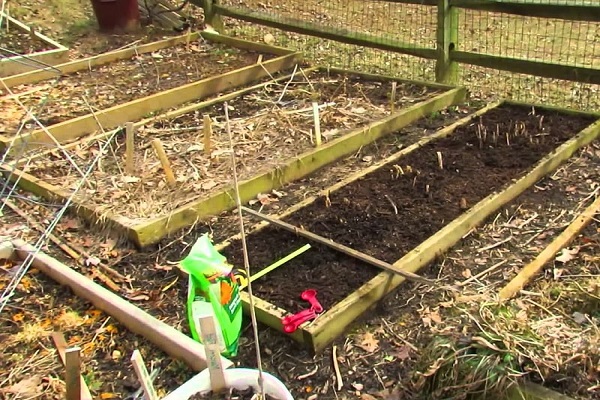
Landing dates
The weather in different regions of the country can vary greatly, so the timing of forcing seedlings and transplanting them into the soil is different. For example, in the Krasnodar Territory, the forcing of sprouts begins in the first ten days of April, and the seedlings are planted in the garden when flowers bloom on the acacia.
Batat is not a very familiar culture for Belarus, but its lovers have also appeared there. The plant is grown in seedlings, planted under a film in the second and third decades of May. Warm weather in Belarus is already at the beginning of June, so after the 10th, the film is removed from the ridges. In mid-September, tubers are harvested.

In the Moscow region, they are waiting for stable warm weather from 15 ° C and above. Potato seedlings are planted under a film, covering material or cut plastic bottles. Growing sweet potato in the middle lane does not differ from growing a plant in other regions of the Russian Federation.
You can grow a thermophilic culture in Siberia. To obtain full-fledged tubers, two summer months with a daily temperature of at least 20 ° C are enough. Some Siberian vegetable growers prefer to grow healthy tubers in a greenhouse.
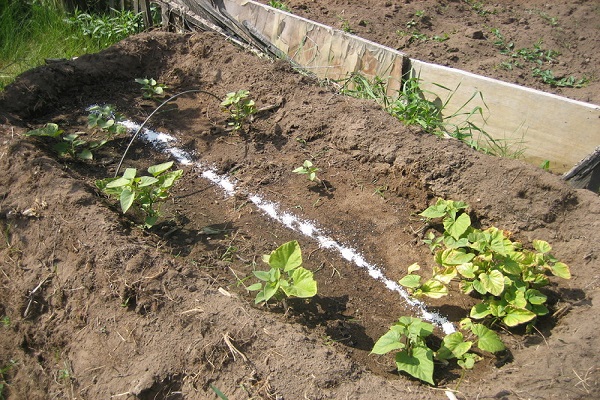
How to grow a sweet potato
Growing a sweet potato will take some effort, especially in the first month. Plants require a lot of moisture and will have to be watered daily. A month later, if the seedlings look healthy, watering can be gradually reduced - first, their frequency, and then the volume.
To form large tubers, Batat needs a lot of nutrients, the growing plant intensively absorbs them from the soil throughout the season, especially needs potassium. Fertilize the soil around the plants in August, apply potash fertilizers or ash. An infusion is prepared from the ash. Withstand the infusion for at least two weeks. Fertilization for plants is carried out at least once a week.

Plant watering ends two weeks before harvest. To keep the fruits better, they must be dry during digging. A sign of ripening, readiness of the fruit for harvesting is the dry leaves of the plant. Finish harvesting tubers before the first frost. There should be no rain on the day of harvesting. The harvested tubers are stored at positive temperature (10 ° C). Before laying the fruits for storage, they are dried in the sun.
Tips from experienced gardeners
Those who decide to master a new culture will be helped by the advice of amateurs, in whose gardens Batat has been growing for a long time:

- After planting sweet potato seedlings in the soil, forget about hoes and rakes, their use is prohibited. Pull the weeds out of the soil by hand to avoid damaging the weak roots of the plant. Soil maintenance is minimal.
- Dry the excavated Batata in the sun for at least 7 days. The longer the tubers of the plant are basking in the sun, the better their taste.
- The skin on the tubers is thin, so do not throw them away during harvesting and storage.
Growing a new culture can be a favorite pastime. A healthy vegetable will add variety to the diet and increase its nutritional value.

